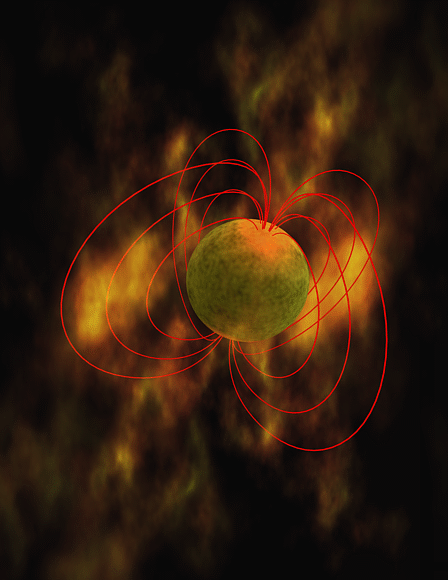THE SOUTHWORTH PLANETARIUM
70 Falmouth Street Portland, Maine 04103
(207) 780-4249 usm.maine.edu/planet
43.6667° N 70.2667° W
Altitude: 10 feet below sea level
Founded January 1970
2021-2022: LXXV
"Science is what you know. Philosophy is what you don't know."
-Bertrand Russell
THE DAILY ASTRONOMER
Monday, January 31, 2022
Something Strange in the Galactic Neighborhood
It's weird, even by astronomical standards.
It's close, at least by galactic standards.
No astronomer has ever seen the like of it...until now.
Discovered by Australian University Honors student Tyrone O'Doherty, working as part of a research team led by Dr. Natasha Hurley-Walker, this bizarre object emits a burst of every for one full minute every eighteen minutes. Data analysis has shown this object to be approximately 4000 light years away, relatively close by galactic standards. Although astronomers have previously observed radio transients, celestial objects that periodically emit bursts of radio energy, this specimen is unique.
Whenever astronomers discover such an object, they pose theories as to its identity based on prior observations of similar bodies. Some scientists suggest that this "spooky object" could be a new type of magnetar, which is a type of spinning neutron star. Neutron stars form when highly massive stars collapse in on themselves at the end of their life cycle. The resultant remnant is highly dense and spins on its axis rapidly, often multiple times per second. Magnetars differ from other neutron stars in that their magnetic fields are often thousands of times more powerful.* Although the magnetar spin is also slower, none of the known magnetars have exhibited behaviors consistent with this object.

Could the strange new object be a different type of magnetar?
Dr. Hurley-Walker does caution people not to assume that this new object is evidence of extra-terrestrial intelligence. When spinning neutron stars, or pulsars, were first discovered in 1967, many astronomers referred to them as LGMs, or "Little Green Men," because they emitted pulses at such regular intervals and consequently were initially thought to have been deliberately programmed. This new object is also not likely to be an LGM because the radio energy it emits is spread over many wavelengths.
More observations are needed to determine this strange body's identity and also to determine if others lurk out there in the galaxy. For now, we can only say that something strange has been found in our galactic neighborhood.
(Insert clumsy Ghostbusters reference here.)
Tomorrow, the first part of the February 2022 night sky calendar.
* The average neutron star's magnetic field can be more than a million times more powerful than Earth's.
To subscribe or unsubscribe from the Daily Astronomer:

Updated Miranda photo as promised